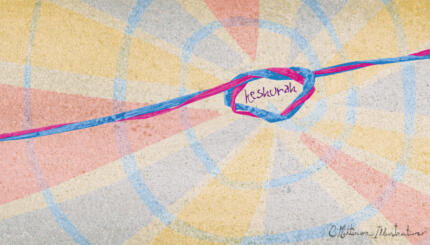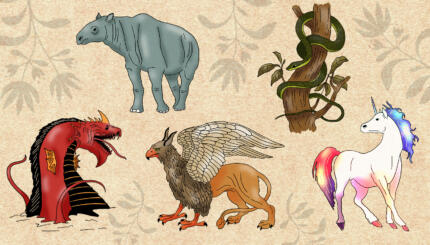Commentary on Parashat Korach, Numbers 16:1-18:32
Several years ago, when the Lesbian/Gay/Bisexual/Transgender Pride Day closely preceded US Independence Day the celebration of freedom was frequently in the news. News coverage of the celebrations, whether laudatory or condemnatory, generally lacked serious analysis of the very concept causing so much excitement.
This week’s Torah portion makes up the deficiency. The Korach story examines a set of political problems which plague the LGBT community, the United States, Israel and many other communities and societies: How can freedom be institutionalized? What resources are needed? How should they be used? Can a set of groups with conflicting goals create a community that safeguards the liberty of all? When conflict threatens stability, can freedom survive?
In Parashat Korach, stability turns out to be far more vital. Freedom for the Israelites means the escape from Egyptian slavery, now two years in the past. Like the United States hundreds of years after independence, or the LGBT community decades after the Stonewall Rebellion, the Israelites have moved into a new period, with new demands and priorities.
Institutionalized freedom means stable self-government, at which the Israelites are unpracticed. They, like many modern people who take formal democracy for granted but find it confusing and intractable in practice, find protesting easier than organizing, reacting easier than acting. Unused to compromise or cooperation, lacking agreed-on standards of behavior, they quarrel constantly.
With your help, My Jewish Learning can provide endless opportunities for learning, connection and discovery.
Moses: Ambivalent Leader
Moses, the divinely inspired social architect, ends up forced into a judicial role. The Torah shows our ancestors bringing so many problems to him that he works from sunrise to sunset every day settling their disputes. At the same time, they don’t trust him–having never known any authority they could trust.
In Parashat Korach, the people have finally departed from Mount Sinai. After the giving of the Torah, after the panicky construction of the Golden Calf, after power struggle, bloodshed, and near annihilation by a disappointed God, they break camp during a brief interlude of relative calm, before the community fragments again.
Some of the fragments begin to coalesce around an alternate leader, Korach. Unlike Moses, Korach is a skilled politician, one who understands and can motivate people. The Torah depicts Moses as an unwilling, untalented political leader. His strength is prophecy: the ability to envision an ideal society. The gap between his dreamed of organization and real people’s fear-driven, self-perpetuating disorganization creates much of the painful drama of his life.
Korach: Building Coalitions — Towards What?
Korach is a member of Moses’ and Aaron‘s tribe, the Levi’im, the priests of an emerging theocracy. Originally, neither Moses nor anyone else imagined such an extensive priesthood. Ritual responsibilities had always belonged to all first-born sons. The Golden Calf debacle convinced Moses to reorganize the tribes, putting the most trustworthy closest to the center of power — the Mishkan, or tabernacle, which had yet to be built.
In this reorganization, Korach’s family ended up subordinate to Aaron’s. Thus, his revolt starts as a squabble among clans of the same tribe.
However, Korach is astute enough to understand exactly how unimportant the grievance of his clan will seem to most of the nation. Seeking a bigger constituency, he first forges an alliance with Datan and Aviram, whose tribe has been steadily losing power. To further expand his power base, he preaches radical equality, publicly opposing new status of the Levites, claiming that “all the congregation are holy.”
Tradition has judged Korach harshly, as an opportunistic demagogue. Some modern Jews, on the other hand, identify with his stated program of democratizing religion. Whatever his motives, he was a superb coalition-builder, one who knew how to recognize and connect the agendas of various discontented groups among the mixed multitude who escaped Egyptian slavery, and who now sought to retain their new, ill-defined freedom.
Accepting the Torah’s account of miraculous intervention in which Korach was swallowed up by the earth as allegorical, we can ask why his revolt failed. One answer is that Korach’s coalition-building talents and (perhaps genuine, perhaps rhetorical) inspiring ideals couldn’t make up for his, or his followers’, lack of organization-building ability. Our ancestors’ survival depended on order, which they couldn’t create among themselves.
A Clash of Styles, and Missed Opportunities
Moses understood this. Korach didn’t. Korach could bring people together. Moses could give them direction. Perhaps Korach’s skills, united with Moses’ vision, might have served to create unity without imposing a theocracy. Instead, their talents, which might have reinforced each other, worked against each other.
In every generation, those struggling for meaningful social change need both Korach’s and Moses’ skills, the ability to bring disparate groups together and a vision of how they can function effectively together. Like the generation that came forth from Egypt, the generations that created the mid-20th century’s great wave of goal-oriented social action, whose hunger for justice and thirst for freedom exploded from Selma to Stonewall to the Soviet Jewry movement, are a mixed multitude. Different groups bring different, not always compatible, priorities. The bases for unity often remain elusive.
Moses strength was envisioning organization. His weakness was being too visionary to actually organize people. That vision alone is insufficient was one of the lessons of the civil rights movement. Shared ideals alone couldn’t sustain unity between cruelly oppressed African Americans and privileged, though passionate, white believers in equality.
Lack of shared vision is equally disabling. The LGBT community fragments yearly into an increasing number of specific identities based on different nonconformities: gay-white-male; lesbian, bisexual, pansexual, queer or questioning; transgendered or transsexual. These nonconformities can lead to political divides as deep as any in Israel or the Jewish community.
The Torah shows the generation of the desert as lacking practice in self-government, lacking mutual trust, and lacking any connection between Moses’ vision of the ideal society and Korach’s political ability. Our ancestors’ many fears and discontents continually led them to want to go back to Egypt, back to servitude. In a sense, their wish was granted, through the relative stability of the new theocracy.
Any nation or movement that hopes to institutionalize or maintain freedom must begin by creating coalitions based on people’s real, seldom identical, priorities, rather than around assumed bases of unity. But that isn’t enough–it must have a program, one that encompasses more than protest, for the purpose of reaching definable goals, based on shared values.
Without Korach’s skills, no such coalition can come into being. Without Moses’ vision, no coalition can survive and mature into a real community or society. When both combine, the opportunity exists for democracy and stability to triumph together.
Reprinted with permission from SocialAction.com.
Torah
Pronunced: TORE-uh, Origin: Hebrew, the Five Books of Moses.


